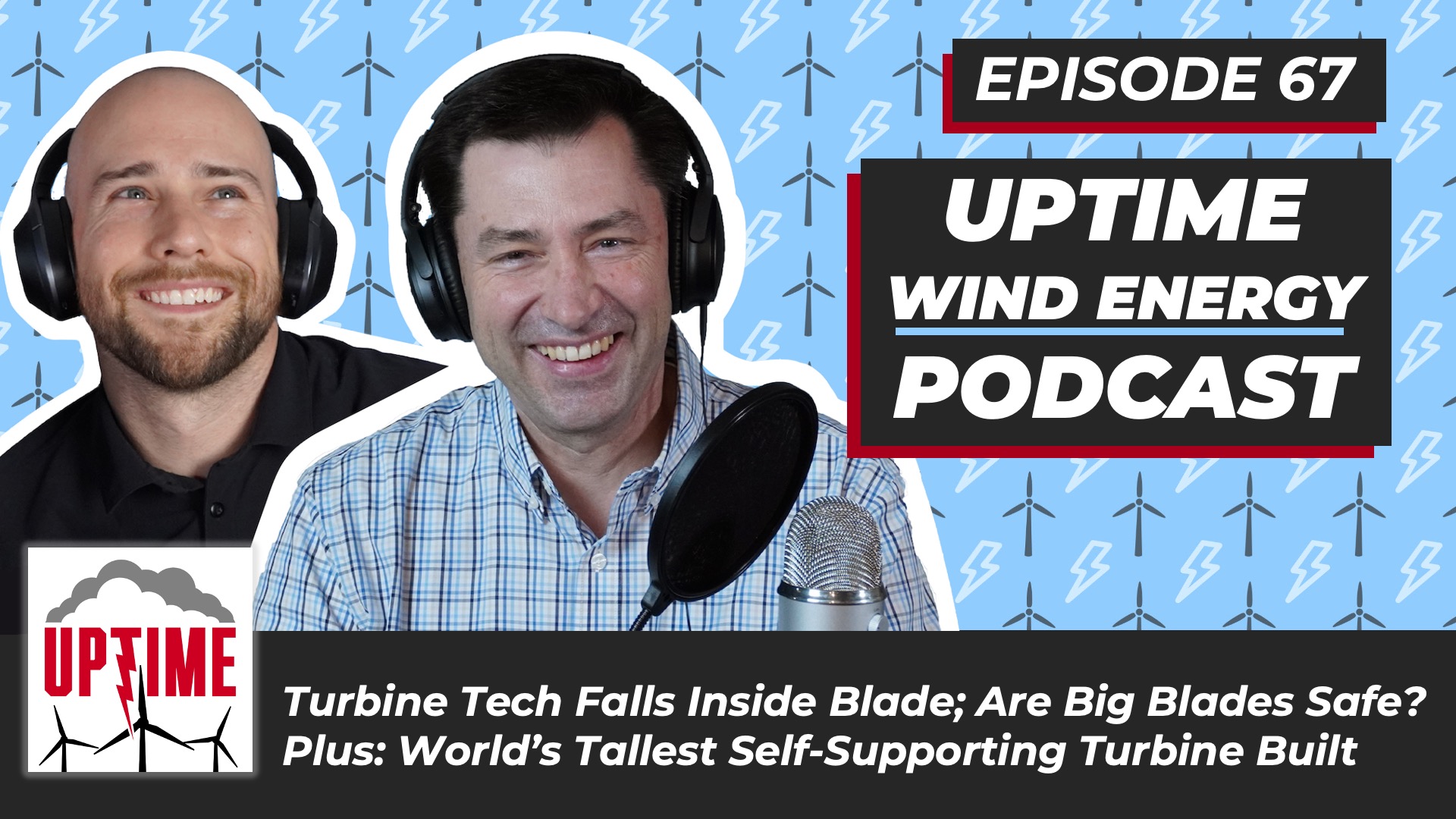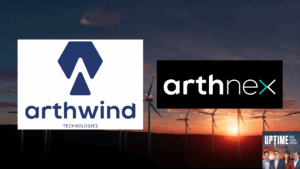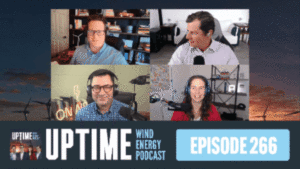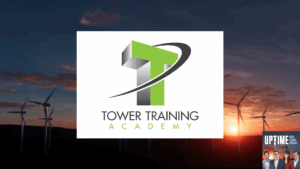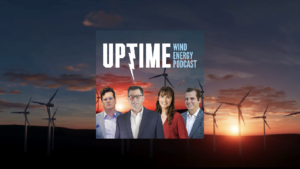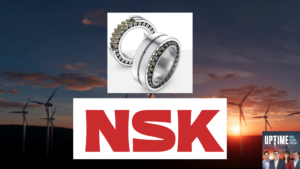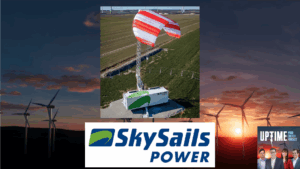A wind turbine technician fell down the inside of a wind turbine blade, prompting a successful rescue effort despite a scary situation. Will we see more of this with an increase in blade interior diameters? Plus we talk about misinformation and GE’s recent press about testing blade tip aerodynamic add-ons. Watch this episode on YouTube here.
Sign up now for Uptime Tech News, our weekly email update on all things wind technology. This episode is sponsored by Weather Guard Lightning tech. Learn more about Weather Guard’s StrikeTape Wind Turbine LPS retrofit. Follow the show on Facebook, YouTube, Twitter, Linkedin and visit Weather Guard on the web. Have a question we can answer on the show? Email us!
Podcast: Play in new window | Download
Transcript: Wind Tech Falls Inside Blade; GE Test Blade Tip Add-ons; Plus New Tallest Turbine?
0:00
This episode is brought to you by Weather Guard Lightning Tech. At Weather Guard, we make lightning protection easy. If your wind turbines are due for maintenance or repairs, install our StrikeTape retrofit LPS upgrade at the same time. A StrikeTape installation is the quick, easy solution that provides a dramatic long lasting boost to the factory lightning protection system. Forward Thinking wind site owners install StrikeTape today to increase uptime tomorrow. Learn more in the show notes of today’s podcast.
0:37
Welcome back. I’m Allen Hall. I’m Dan Blewett. And this is the uptime podcast where we talk about wind energy engineering, lightning protection and ways to keep your wind turbines running.
0:57
All right, welcome back to the uptime podcast. This is Episode 67. I’m your co host, Dan Blewett. On today’s episode, we’re going to talk about some disinformation maybe just a good meme. But we’ll talk about the continued trend of the internet, sometimes ruining everything. We’ll also chat about some, you know, a really scary incident with a wind turbine tech recently out of Iowa fell down the inside of a blade rescue effort and was successful, it was mostly unharmed. But still interesting thing with some interesting implications. We’ll talk about some work GE is doing their ta project trying to get a little more aerodynamic efficiency out of their offshore blades, and a really interesting cast in place concrete tower concept. So before I kick it to my co host, Allen Hall, just remember we’ve got uptime tech news is our new newsletter, you can sign up in the description of this podcast below whether you’re on YouTube, iTunes, Spotify, wherever. And that’s just our monthly, it’s not our monthly that’s our weekly update, where we’re going to send you the new podcasts, some great news from around the web, new tech, all the stuff that we’re keeping you up to date on so if you enjoy the show, you’ll definitely enjoy just getting our weekly uptime tech news update. So sign up for that in the show notes of this podcast. So Alan, how you doing sir? Let’s first let’s talk about some disinformation. So first, on Facebook, this thing just started going around. It’s like Haha, look at this wind turbine that melted in the Texas heat. And they showed one of those photos which are crazy photos of. So it sounds like this was a turbine damaged by a storm where basically all three blades were damaged and essentially just wilted.
2:46
Did you see So? What were your thoughts on on a this photo in general it’s a pretty dramatic photo of this whole winter and just wilted it is. The early indications about the photo were that it was a lightning strike. That’s the that was the first thing I saw. And then the heat.
3:03
The discussion about where it got so hot in Texas that the places melted. Yeah, just just wilted like, right. That was Haha, funny. And then the latest was maybe as wind speeds. But I have none of the other wind turbines in that area had that same fault. So make sure you don’t feel like lightning strike broke one of the blades and then it cascaded into vibration, which broke other ones and everything still looks like it’s all sagging.
3:29
So yeah, that’s gonna be an interesting repair, don’t you think? Like, Hi, are you gonna do that? Are you just gonna cut down the whole, the whole structure start over? Or what? Because working around big, massive piece of broken blade still hanging from the hub is not easy.
3:50
And it’s got to be a safety issue, I’m sure. But on the on the meme on the main front. Isn’t it interesting how fast that went around? Like I saw that 50 times in a day.
4:04
Same image or discussion about it’s like, bang, every movie in the world at least in the US saw this thing almost instantaneously. It was crazy. Yeah, and that’s what’s so baffling about the internet is that this could become like an actual like, like I said, I looked up the Facebook post I looked a lot of the comments. Most of the comments were like Haha, yeah, right. It feels You know, it was 500 degrees in Texas. Like most of the people understood that this was not an actual thing but it just it’s crazy. The the misinformation can spread so far so fast.
4:40
And just be weaponized that people want it to be right just to get bad check which ever agenda Yeah, that’s the thing. I mean, do you feel like the fact check almost gives it more? I feel like a lot of times you just need to keep the stuff out of the news cycle entirely. Yeah, the fact that it was fact checked. Got more people to hear the Miss inform you know, the
5:00
The piece of misinformation itself. And it’s just like I’ve been thinking about some of the, you know, to jump this into politics not in either on either side, but just some people who have crazy theories, you know about election results or whatever in the new cycle. Like, if it’s one of these debunked theories, why even post them back in the on the web, right, like, Joe Schmo has some insane thing he says, but because it’s posted on a bunch of major news outlets, it continues to go out there and it continues to give this person credence. It’s like why even like, let’s just if it’s debunked, and it’s a nonsense opinion, let’s just not put it in the new cycle, like just don’t write about it and no, go away. There’s there’s two
5:43
polar opposites that are happening right now in that space, which is fascinating, because I think this wind turbine incident falls right in the middle of that. The first is on on the call the political left, on the political Left, Right now, the United States, there’s an effort via the YouTubes and the Twitter’s of the world to filter, right. And they’re filtering certain things, particularly on COVID right now. And on the right.
6:11
There’s a lot of screaming about fake news. So you got one polar opposite, which is trying to filter the news. So you’ve got the other side saying you’re filtering the news? What happens in the middle, the middle of that, because both ends are correct. Just to some level, there’s some truth obviously, in any sort of claim, there’s some truth to it. And then it kind of goes off to where it goes goes to but the the fact that you could put out a,
6:40
such a picture and a little meme with it, that ever gained traction to the point that someone needed to fact check it, that it shows that there’s such a distrust in media right now. Yeah, that no one believes anything. Even the fact check is going to get poo pooed. Right. Oh, you know, it’s just the big, big wind covering for themselves. I bet I can find that comment and a Facebook post instantaneously. Right. So it is a weird political news environment, politically, but it’s having implications into the what I would term the scientific engineering community, particularly in medicine right now. But it’s also rolling into other engineering things. Green Energy, also where it’s craziness. Weird. No one trusts anybody, because you can’t environment and then this stuff pops up and you’re gonna see this, you’re gonna see that when chairman for the next five years, on posts, I guarantee it, I guarantee it and maybe right there, maybe whoever fact checked, it made them made the initial mistake not to fact check it within a better idea. Moving on as crazy story from Iowa, this wind turbine tech got stuck in a winter and blade. And of course, these are getting bigger and bigger. Obviously, this is onshore. So they’re not nearly as big as some of the offshore ones. But these are still really big blades.
8:05
But a worker for mid American, you know, was was stuck in this blade, and it was a pretty scary incident. He’s okay. But what are your thoughts on this? You don’t hear about this happening very often, he would think it would happen more often, just because there’s a big massive hole or the blade is that you could stumble into and it sounds like it stumbled somebody just stumbled backwards into this thing.
8:32
And luckily, that obviously, there’s three people on site typically, that are working together just for this reason, if once somebody gets in trouble, you can as somebody call somehow, or pull them out, but they had to call emergency crews to help get this guy out of this winter and blade. And it happened at night. Thank goodness.
8:53
Because obviously the wind tends to be a little bit slower at night, and it’s cooler at night. Can you imagine doing this in the middle of the day? Yeah, you get a really been in trouble fast inside of a fiberglass structure in Iowa in the end of June, where it can be 105 outside and it was recently in the Midwest. So it would have been 120 130. Yeah, you could have had more than just a physical broken bone or anything. You could have died in that situation stuck in a little oven. Yeah. And overheated and get over definitely overheated. So I’m sure they were very thankful about that part of it. Now. It I don’t know if this is part of the ongoing efforts
9:37
on the Vestas side to swap out blades and do some repairs or doing some repairs in the blades. It sounds like from a lightning protection side.
9:45
It kind of smells like that, that you know Vestas had that issue with min America. lightning protection, and we’re Sue was gonna make some retrofits from the sounds of it. So maybe they were making retrofits in the blade and stumbled
10:00
That wouldn’t surprise me because it sounded like the retrofits that were being made were being made near the hub of the blade, not at the tips. So they’re working down in the hub, and they make a misstep and loss of footing. And boom. Yeah. So it’ll be more careful on.
10:18
Yeah, what I was wondering about, obviously, it’s not like one of these slides, and we’re just going to be a smooth,
10:25
smooth, the inside is certainly not smooth. And guy, he is wonder if you’re even if the blade was at an angle, where it’s not like a straight fall straight down, you know, you’re just sliding down it. You just wonder how many seams and bolts? And can you know that obviously, there’s lots of things inside the blade like the down conductor, he didn’t just wonder he’s sliding down the slide potentially, and seeing little obstacles that you’re going to hit at a high speed as you pick up speed. And that’s sharp could also kill you. It’s just really scary. Yeah.
10:54
You know, Paul geib,
10:57
is a guest on our show who is a expert and a lot of the things in safety. And he studied that over the years, he was talking about one of these old ladder designs in towers, they kind of got the moniker of gut rippers, which was this this ladder instead of having the so obviously, every ladder has the rungs, and then it has two things on the outside, right. So it makes that h shaped but on these gut Ripper ones, which is the term we use for it is they have one column down the center. And then the rungs extend out, and there’s nothing holding the edges of the of the rungs. So if you were to fall down that tower, and snag your body on one of these rungs, because each of the edges are exposed.
11:40
You know, that could really rip you open as you’re falling. Yeah, I mean, that that could be the reason you die. And that’s why those ladders I think have been phased out because they realize that there’s some gruesome things happening. So just, that’s really lucky. This guy was okay didn’t hit anything, you know, like, because it could have gone a lot worse. Oh, yeah, can bleed out. If you ever play around fiberglass long enough in epoxies, you know, how sharp that is, those corners and edges can be and getting cut, being stuck, bleeding, could be bad fast. I’m, you know, I got to give a hand out
12:16
some things out to the rescue crews, because this is kind of in the middle of nowhere, right? It’s not near a big city. So you’re dealing with local fire departments and local ambulance crews and
12:27
safety people going out there and, and helping out. So it’s a local effort, and you got to give them a hand because they were ready for it. You know, they were ready for it. And they it seems like everybody came out. Okay, which is good. So moving on. So the GE Tia de turbine improvements for additional energy project. You know, they’re trying to develop, you know, just some add ons, whether they’re vortex generators or whatever, on to the tips of blades, especially offshore to just try to, you know, suck a little more power out of them.
13:00
Allen, to me this, this seems like, you know, vortex generators have been out for a long time. You know, we’ve got a couple articles about them on our website, you know, our friend Nicholas Calderon from power curve was on the show talking about some of the, you know, the the well known efficiency upgrades that they provide. Why this press release now and 2021? This seems like they’re announcing a thing that’s almost feels like old news. But But is it? Well, that’s a good question, because a lot of the add on aerodynamic changes they have listed are definitely things we’ve known about for a long time. And is it is it a, is it really the add on feature like a vortex generator? Or is it more about where the vortex generator has been located on the blade and maybe the shape of the blade a little bit in combination with some other add ons that they’re, you start putting pieces together and then right symmetry comes in, and then you get this 1% 2% improvement, which is what they’re looking for.
14:05
It’s odd, because, like you said, it’s really known things. But
14:12
I think realistically, what they’re, what appears to be happening is they must have CFD aerodynamic analysis of all of these things. And they must have probably some level of wind test tunnel testing done. It seems like GE and lm have the wherewithal to do some wind tunnel testing. It seems like there’s a correlation to the real world that they’re missing. So they’re trying to connect CFD to one tunnel results to what actually happens on a turban there’s must be a missing link in there somewhere because they’re trying they’re playing so many different pieces, aerodynamically that’s what you do. If you’re trying to
14:58
box a problem
15:00
Right. One of the ways to sort of box a problem is to put a bunch of variables in and see where the extremities are of this problem set. And that’s what this sounds like is like, oh, let’s try a bunch of different things. Let’s try to understand what we can do and what we can’t do. And Can Can we come back into a modeling environment and actually model it correctly? And then and no, that’s going to be an improvement. That’s what it feels like. But it’s weird that they’re actually going to make 12 meter long sections and play with different fittings on them a different aerodynamic fixes, quote unquote, fixes to do that, and how are you going to monitor that it’s going to take you several weeks or months to get enough data to pull out the marginal improvement in performance, because you can’t necessarily measure 1% in 24 hours, I need to let the turban run for a while. It’s gonna take months and months and months to do that. And then when do you When do you call it quits like this isn’t working or this is working, that’s going to take them months of time to do that. It’s a very interesting, interesting concept. And I hopefully they push out some data, GE, obviously made a big press release about it, because even I saw it, it was just it was blasted everywhere. So they’re looking for some PR on it. It’s an interesting thing you wouldn’t expect to see at this point when I was going to be my other question for you is, you know, we’ve talked about the secrecy in the wind industry and how companies want to keep a lot of this stuff to the vet close to the vest. This almost feels like one that I wonder
16:28
why they’re putting this out as a press release, like what do they gain by doing this? Yeah. When it seems like so many little things like this, like that they’re testing, they don’t want to be like you think this may be a just a shift. And overall, they’re just trying to just get more out there and just be more in the news cycle, because of how much wind energy is going to take off in the future that might be good for them long term, the Aerones Oh, GE is always doing research, you know, more, you know, it’s another gold star for when they’re trying to, you know, when development contracts. And I think the offshore wind environment and wind economy in the United States, is driving GE to do things because GE is seem to be the winner before it even starts. In terms of offshore wind in the US. And the way you give that impression is you’re doing all these
17:20
things that seem green, right? So even if you know the answer, I’m pretty good handle on the answer. Putting out press releases, particularly United States place to the political aspect of this and getting states and localities to, to welcome you in. And GE been an American company. That’s pretty easy to do already. But it doesn’t hurt to keep pushing your credentials about how green of a company that you are, regardless of if it’s, you know, a major financial impact, press release, or just an engineering press release, which is kind of what does is it does add to that resume of Hey, GE is a green company. Because if you if you said GE 20 years ago, green energy wouldn’t have been in the top 100 things that you were would relate them to. So I think GE as a company has to get over that hurdle of a lot of people in the northeast, think of GE as a big industrial company that made
18:17
generators and locomotives and all kinds of refrigerators and all that kind of stuff. And now you’re trying to refocus people into thinking about them as differently as a company. And that seems like a what this least part in part what this is about. Yeah. And of course, their stock has rebounded quite a bit from last summer. Last summer, it was in the $6 range. And now it’s in as of today, it’s 1342 a share, of course, they’re actually doing a one to eight stock split. So if you own eight, eight shares of GE at 1342, for example, you’ll get one share at you know, that would be like $104, something like that. So they’re reading about some of that recently, they just said these days where we feel like,
19:01
you know, I don’t exactly know the ins and outs of it. I’m an amateur stock market.
19:07
I wouldn’t even I don’t know what I would recall a call myself, but, you know, I have an awareness of some of the stocks. I fall in some of the companies and some of the big ones in wind energy, but it’s a great question, but they just said this is where we feel like our share price should be okay, obviously, no one, no one loses any value, but it seems like they just want to they don’t want to be a $13 company on paper they’d rather be $100 company which I kind of understand there’s definitely a psychological effect there. Right?
19:36
When Tesla sets it up your standard or whatever it is, yeah, you feel you’re 13 you kind of don’t feel it right? Well and you wonder if that attracts bigger investment money because you know when you think about it, so like Shopify is a good example there, their stocks like 1500 a share something like that. Amazon’s stock is, you know, in the 2000s per share, and obviously they could divide it up and make it you know, Apple split their stock last summer.
20:00
Right, went from, you know, $200 a share to $100 a share and made it more accessible to the Commonwealth. Right. So to say, but But yeah, I think, you know, person if they had 15 $100 to spend, they could buy one share of Shopify, or 100 shares of a $15 stock and which do you feel better about as an amateur investor? You know, the same? Always this ultimately is the same amount of money. Yeah, you know, if it goes from 1500 to 1600, it’s the same as it going from $15 a share to $16 a share if you own 100 of them that make no difference. But I think there’s a psychological effect and it might attract. I don’t know if bigger investors buy tend to buy more expensive stocks? That’s a good question. I would think there’s probably some psychological effect. But either way, it seemed like GE just wanted their they said, this is just where we feel like we want to be to call in some shares and, and increase the price that’s going to happen pretty soon. That’s fascinating. I think they announced they announced the date.
20:57
But yeah, so what a lot of things are happening at GE like with the CEO, Mr. Kolb, you know, they’ve they’ve cut a lot of debt. Yeah. And it seems like they’re going in the right direction.
21:08
Is CEO pay is
21:11
incredible. Of course, what CEO pay is in these days, but the GE does seem to be on the up and up. So, you know, maybe this is part of a new lease, like a new leaf for them with more press releases, like you said, just trying to be in the news cycle more that they’re really actively trying to be a world leader, which of course, every company is so
21:38
last on the docket today. And this is a really interesting piece of engineering kind of goes.
21:44
Me Not really hand in hand with what cobots doing. But just the idea of how can you get wind turbines taller.
21:52
And this company s Seiko has built a telescopic concrete tower. This is just finished in China, their first prototype and it’s in full operation now. And basically, this technology they patented is kind of like these self building cranes. So al and I were talking off camera that, you know, in DC, there’s cranes everywhere. They’re always building new construction, you see these things? I remember one day recently, I was looking, I’m like, how does that crane come to exist, like in this in this city. And apparently they build themselves. So they start off as like a 30 or 40 foot crane, and they have these like latticework sections, and they pull up another, you know, maybe like 20 meter section, and it hoisted into place, and then they bolted in, and then the crane crawls up it and then it hoists another section, you know, puts it into place it crawls up it and then just keeps going until it’s assembled itself, essentially, I’ll put a link in the description. So you can see that on YouTube. There’s some really good examples because people YouTube does question like I did, how do these things exist? Is there like a master crane somewhere, you know, but
22:59
but essentially, in this press release from mistake, oh, they said this, they’re kind of following the same concept where they assemble a section, they go up and then cast the next concrete section above it and keep going up as the sections get a little bit more narrow and telescoping kind of way. But this tower looks really impressive. And they said it’s, you know, it’s an operation in China. So, Alan, do you feel like this is something that I mean, it feels like this is a Why didn’t this exist earlier kind of technology doesn’t seem super high tech or super? Was it just hiding in plain sight? I think it’s a, it’s kind of like cobalt in a sense that 3d printing of concrete as is a logical extension of 3d printing or plastics. But there’s a lot of problems that you have to solve in order to go make that happen. And I’m betting This is the same, same thing. Obviously, getting the wind turbine higher up in the air gets it into cleaner air and more velocity here typically. That’s why the scale of wind turbines has grown so so massively over the last years, a couple of years, intercept more wind create more power, getting the right wind space, make more power. And the question is it comes to an economic issue of do I make off taller steel tower? Do I need a bigger crane to assemble this thing, which is what what you would need right? You need another crane to lift this thing up higher and the cranes are already expensive the way that they are, versus making something that sort of erector set, build itself stackable concrete sections or you’re pouring concrete sections and lifting it then put another one in. That’s a very fascinating way of doing it.
24:45
And you know, in these engineering type
24:49
events where you’re breaking ground and unclear on a construction technique that takes a long time to penetrate. It just does right. How are we have we known how to build houses
25:00
Out of concrete and haven’t. But all of a sudden now we’re back at added again, I think Thomas Edison was building houses out of concrete back in the late 1800s, early 1900s.
25:11
And here we are 2021. And now we’re going at it again, it takes a long time to gain acceptance and figure out all the bugs and to get something that’s a prototype ish, functional enough that you can then see what the revenue created is created by this thing. And if the revenue created by creating these concrete towers, generates more electricity, and costs less to do then a steel, steel tube, then the industry or change, and I think companies like kobada, so that are kind of set up for that right, I think you’re going to see concrete, concrete built, wind turbine structure is going to grow massively, particularly the United States because they figured it out. So this is gonna be, you know, when you see things in China happen,
26:01
construction wise.
26:04
from an engineering standpoint, you go, okay.
26:08
Safety as all the safety things been a place to go do this. Could you do that same thing in the United States or in Europe? Are there safety, things that are happening during that construction that will not be tolerated by code?
26:22
Maybe, maybe, because you think that GE ease in the Siemens, Gamesa is of the world and Vestas is, oh, the world will have seen this and go, Oh, that’s cool. Maybe we need to do that. Yeah. And so this tower that they build, this turbine is 170 meter height. So, you know, 500, you know, 35 feet, something like that. And my meter
26:47
at math is exactly accurate to feet. But it’s really tall, obviously. And it’s not exactly clear, I wish they had a video of how this process worked. I scour the internet to try to find it, couldn’t find it, but it says they, they cast them in place on the ground level, just that I just want to clarify my earlier statements, but then there’s by means of a climbing formwork. So I don’t exactly know what that means.
27:09
The sound Yeah, but I love to see a video of this and in in the future, see if they release something on the web? Because it seems like a really interesting process, but then they’re just arranged on, you know, one side, on top of the other. So yeah, I mean,
27:27
I’m curious if concrete is more expensive than steel, especially for that height? I’m not sure. Obviously, there’s gonna be a lot of rebar inside of it. And there’s a lot of technical challenges rather than just assembling pre bill.
27:43
The steel issue with steel is transportation, where it’s not an issue with liquid concrete. Now they’re gonna cast it, right. So you can drive the truck up there, which is nice. Pump it up, right? Yeah, instead of trying to haul this big, massive steel structure up there. And that’s just another it seems like another step of you know, if you 3d print the base, you know, which cobalt is doing, you then cast on site, the tower, which this company is doing, and then potentially 3d print the blades, right.
28:15
orbital composites wants to do in the near future, you know, you have the whole thing made on site locally, by by local workers using local materials, hopefully, with
28:26
you know, shredded and that’s the other thing here is concrete tower, you could have a lot of shredded winter and blades in that concrete mix, which is cool. That would be a great use for Yeah, well, as we get to the offshore explosion that’s about to happen in the United States. I really wonder if some of that 3d technology is going to be implemented just because a lot of its developed in the United States, some of it is, but if you’re going to start fresh now, with a new factory and a new would you do what we did in the 1980s? Or do you say we’re gonna take a new approach that’s less cost intensive
29:07
to manufacture blades and make manufacture basis and the whole thing cuz you you kind of start fresh sheet all of a sudden, particularly offshore, because there’s not, especially when we get to floating there not, not a lot of history there. So everything is up for grabs. And that’s when you tend to see those little technology leaps happen because clean sheet allows engineers to be creative and to choose things that they wouldn’t have done 10 years ago, so it’s gonna be quite a ride coming up. Well, that’s it for today’s episode of The uptime podcast. Thanks so much for listening. Be sure to subscribe to the show share with a friend and don’t forget uptime tech news. Our Thursday morning newsletter just with new updates on the show new tech around the wind industry is in the shownotes whether you’re on YouTube, iTunes, Spotify, so you can click below, sign up for that and get an update for us. Every time we release a new
30:00
We released a new episode. So thanks again for listening and we will see you next time on The uptime podcast.
30:14
operating a profitable wind farm is all about mitigating costs, minimizing risks and being efficient with maintenance repairs and upgrades. It’s incredibly expensive to send a team of rope access technicians up tower to make even simple repairs. We also know how costly lightning damage can be requiring inspection repairs and downtime for even minor lightning strikes. Maximize the time efficiency of your Tech’s and prevent future lightning damage by installing our StrikeTape LPS upgrade the next time your crews are going up on ropes. Learn more in today’s show notes or visit us on the web at Weather Guard wind.com



